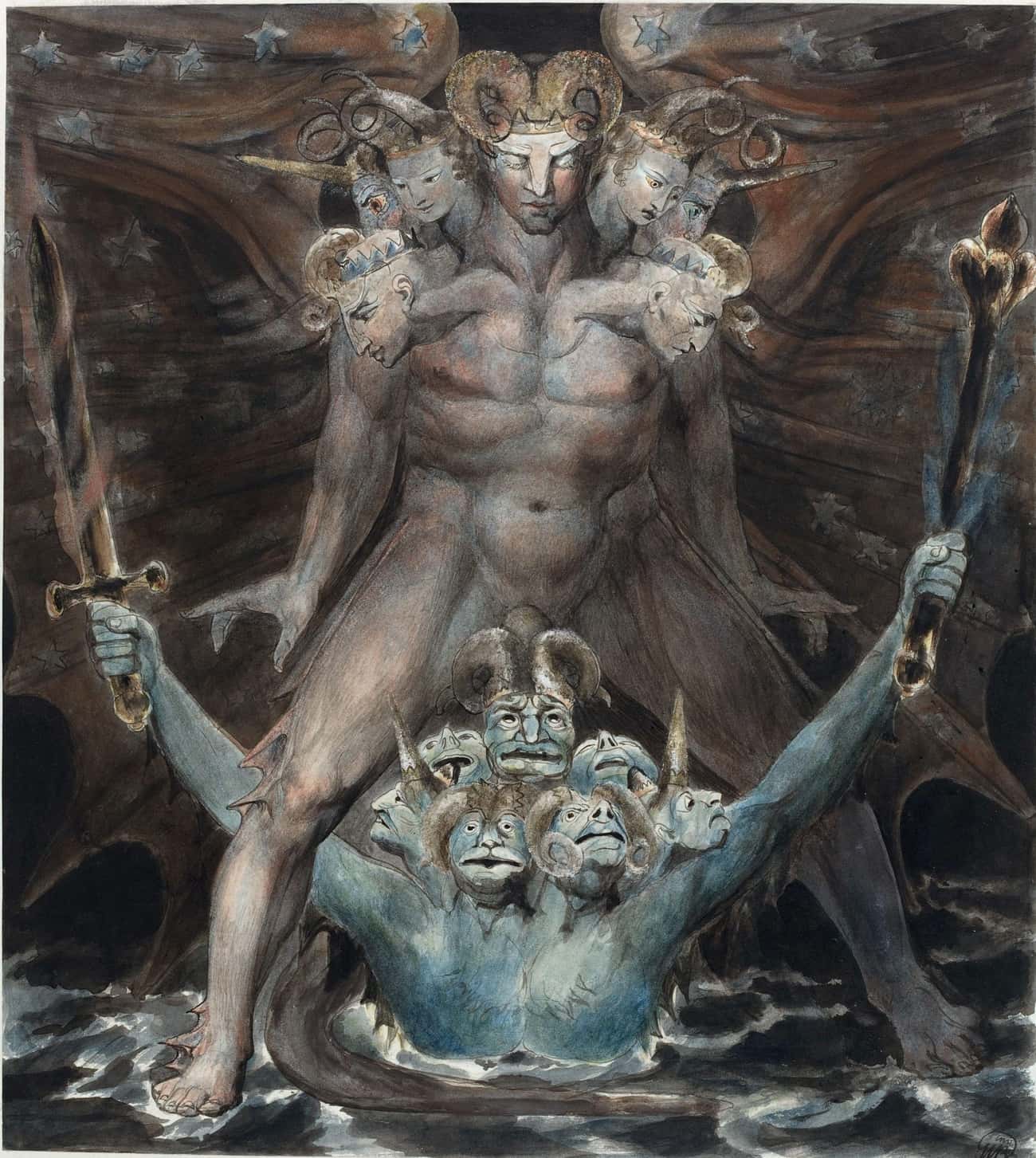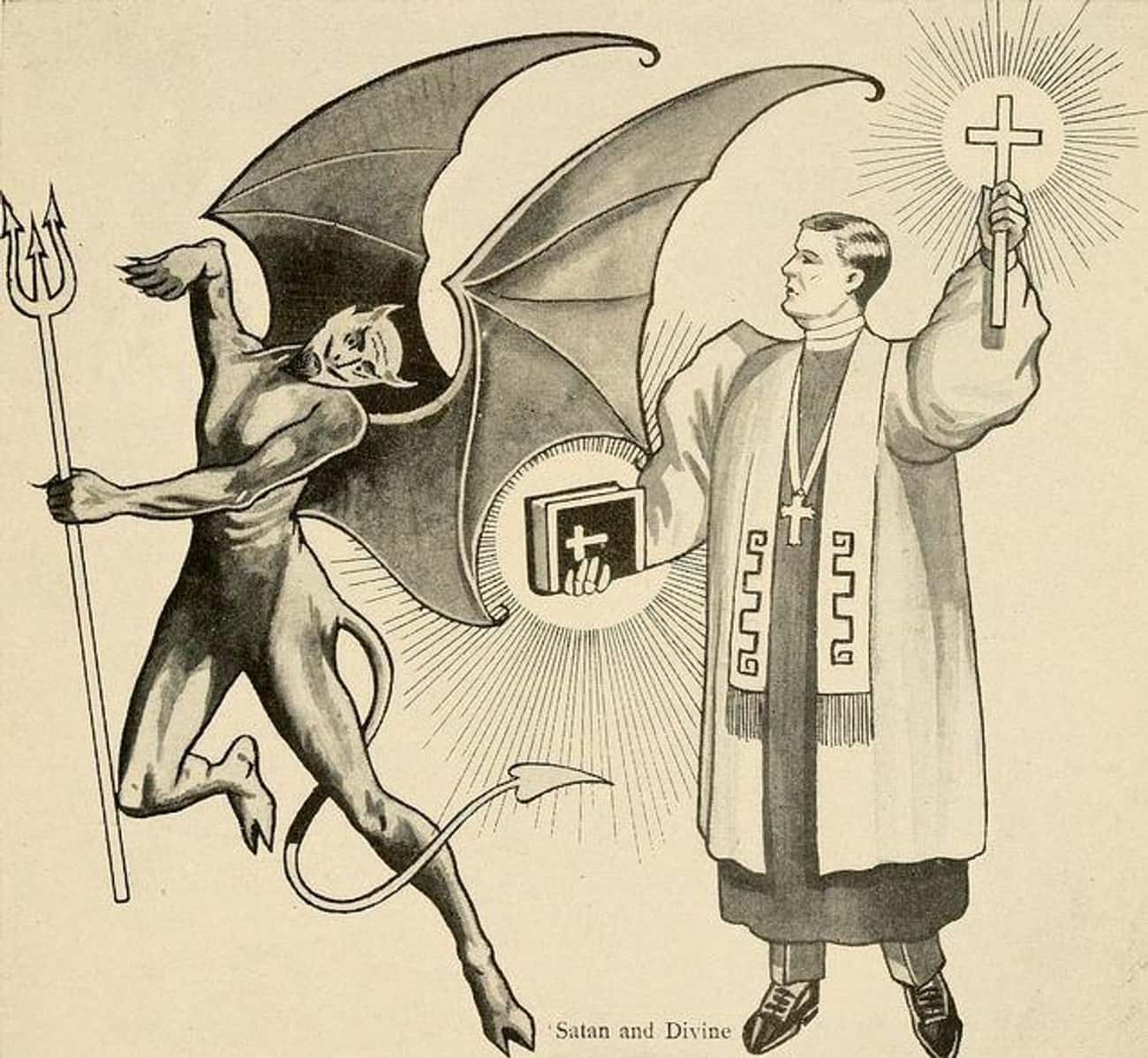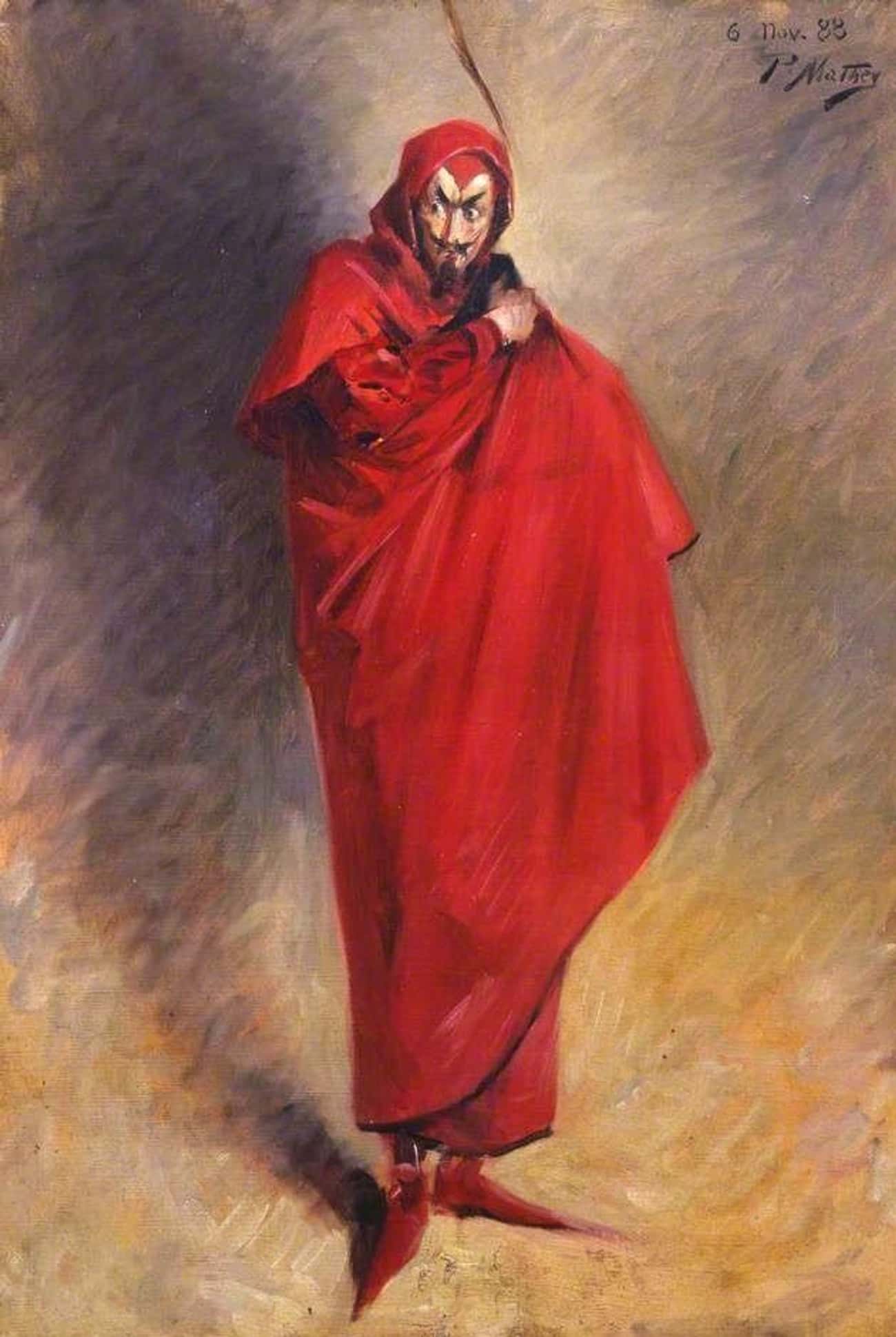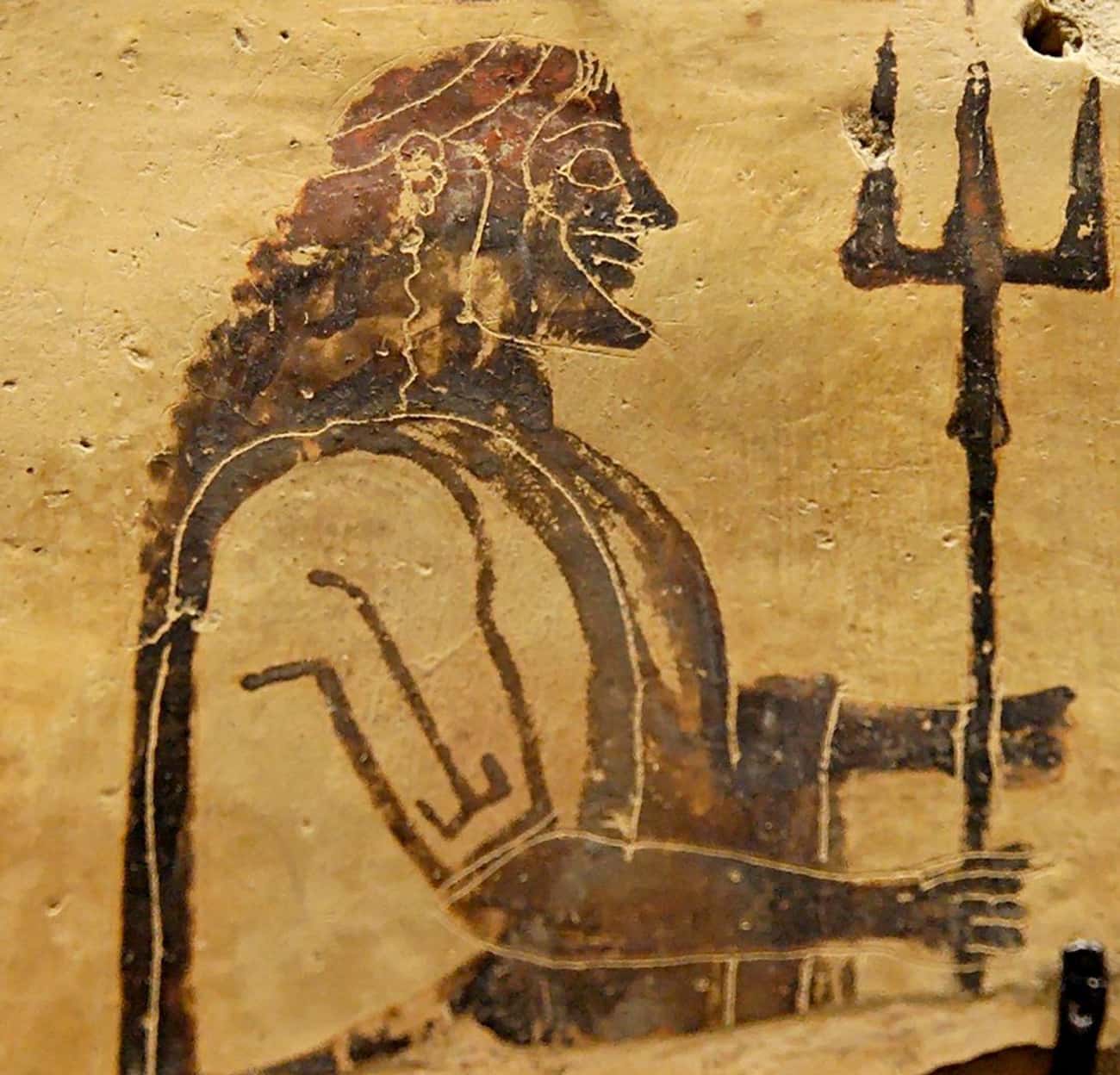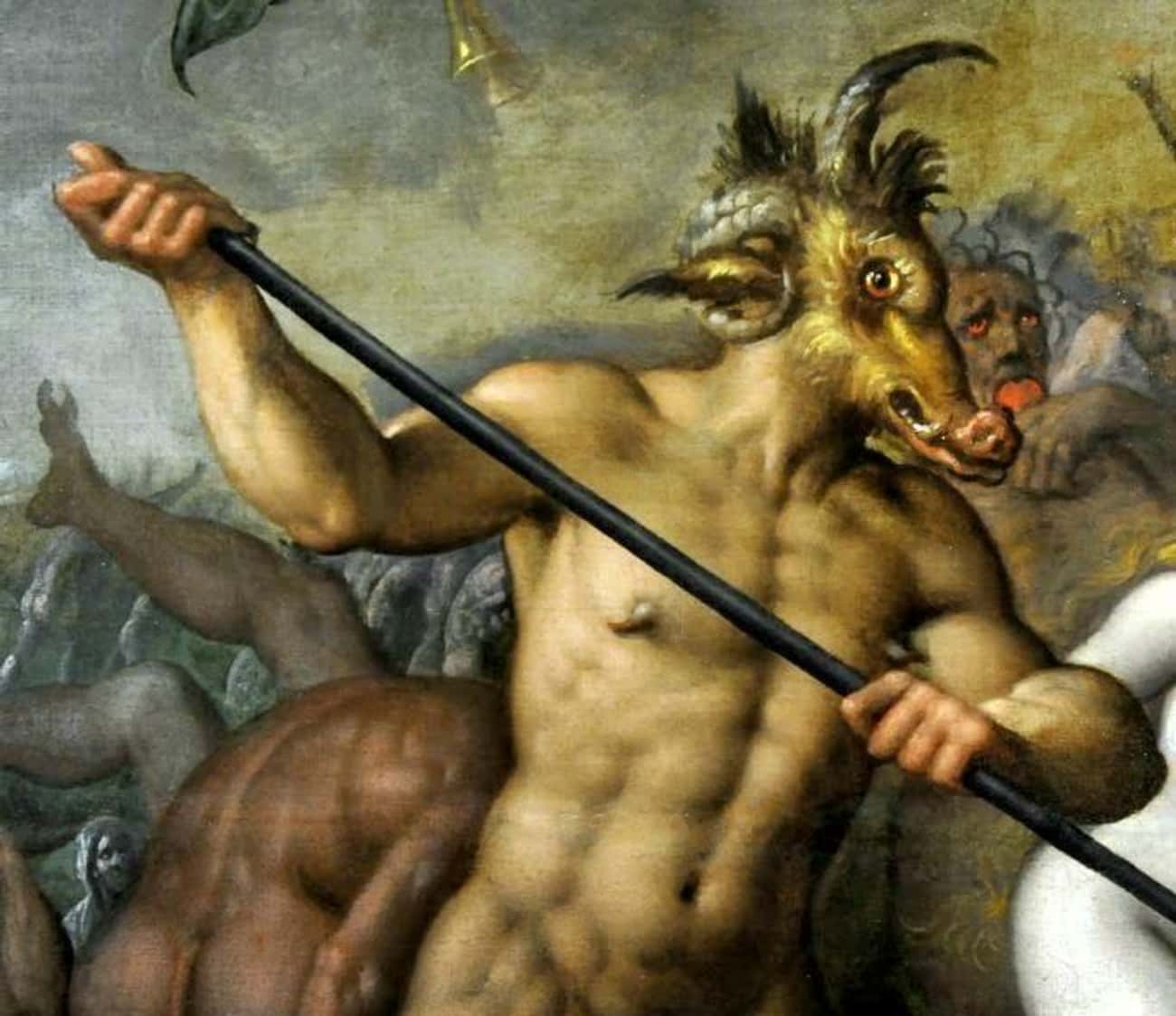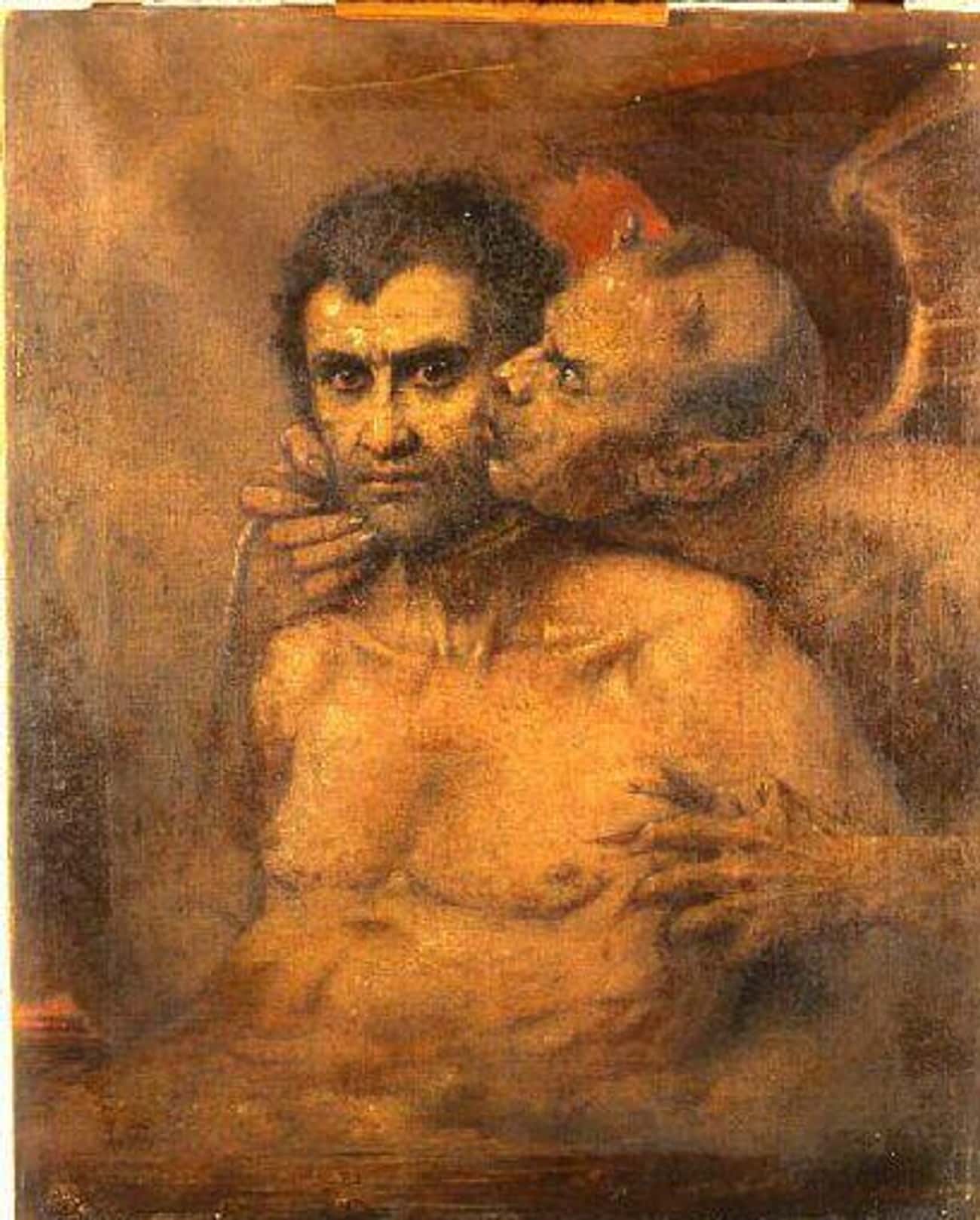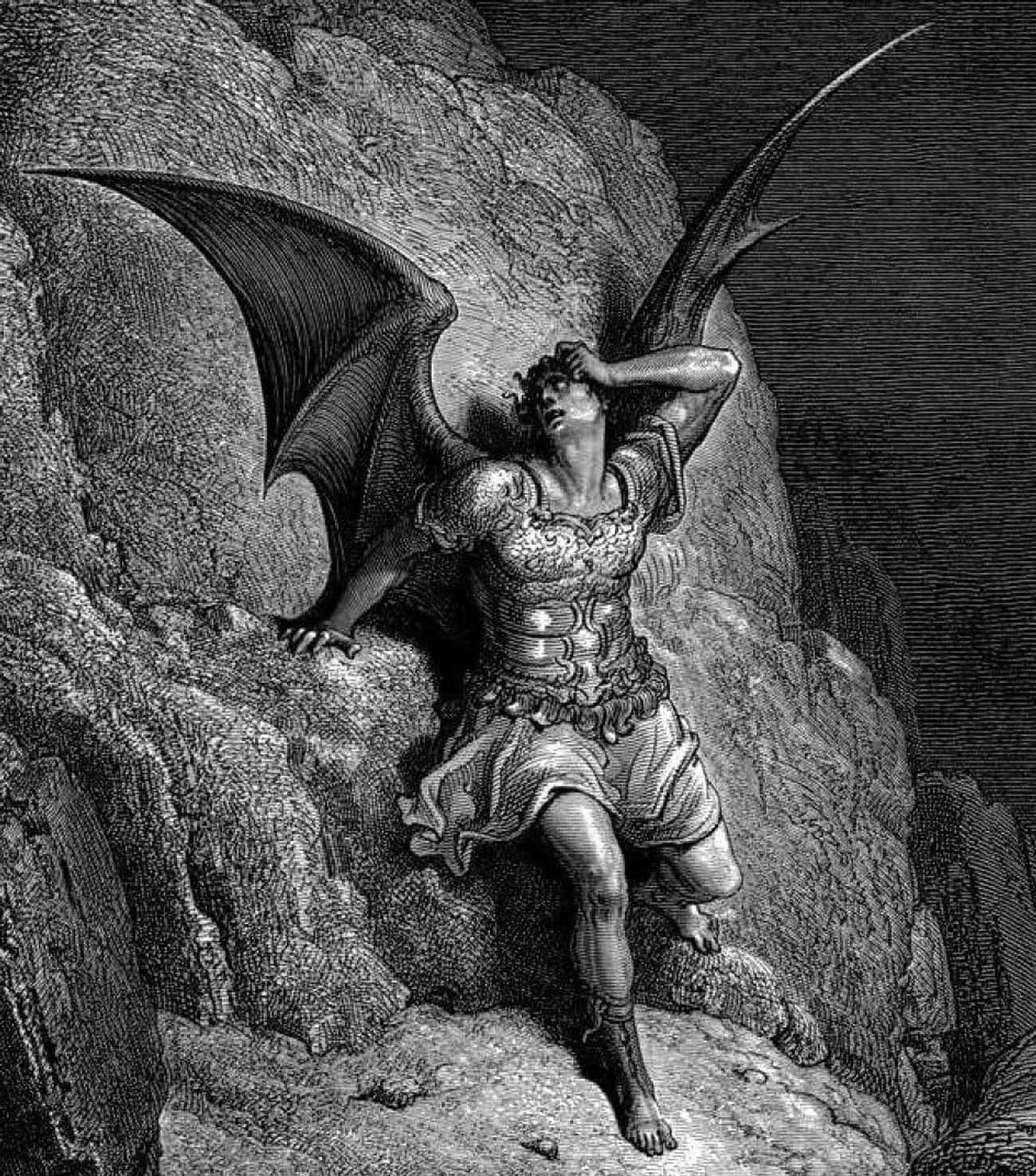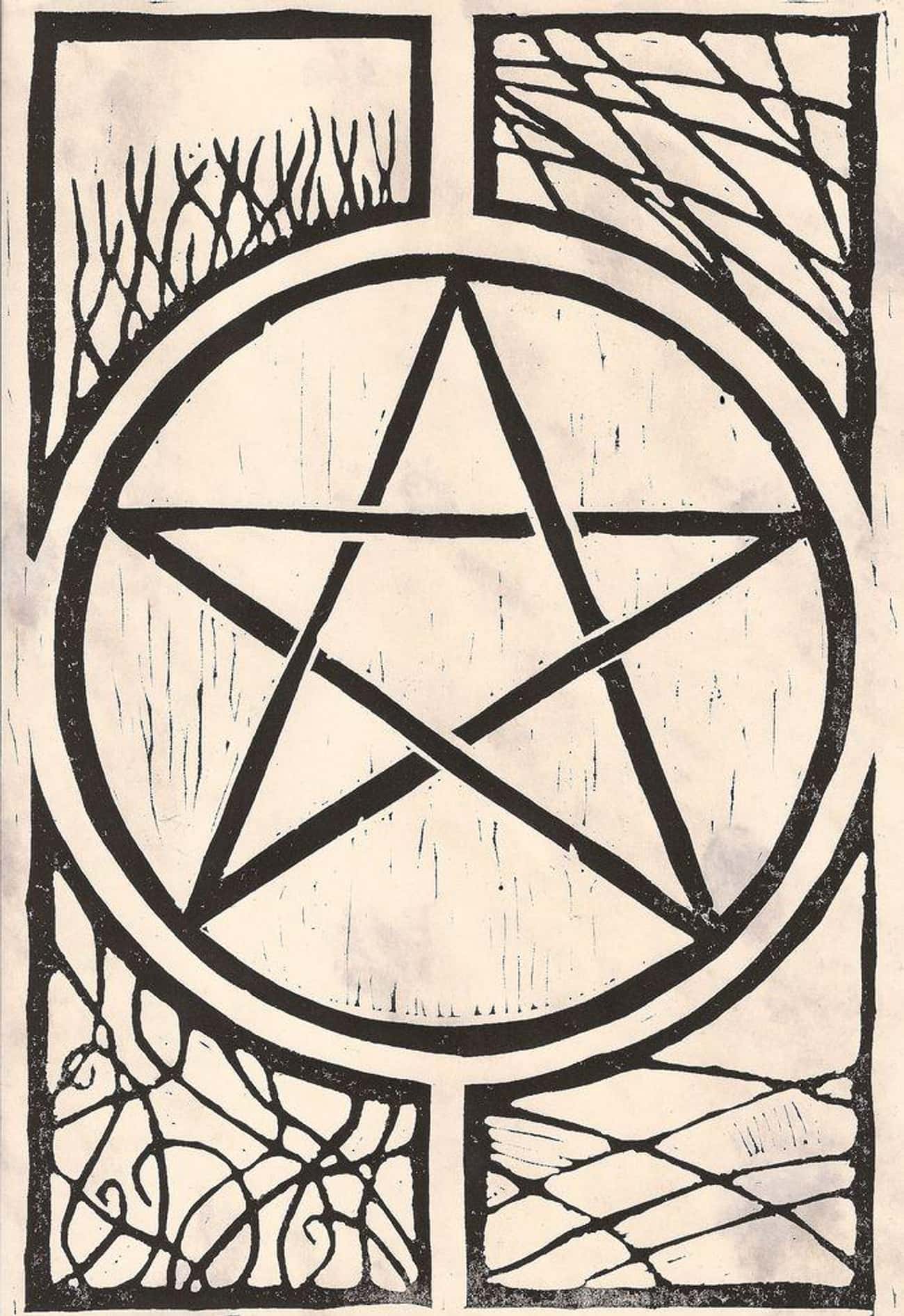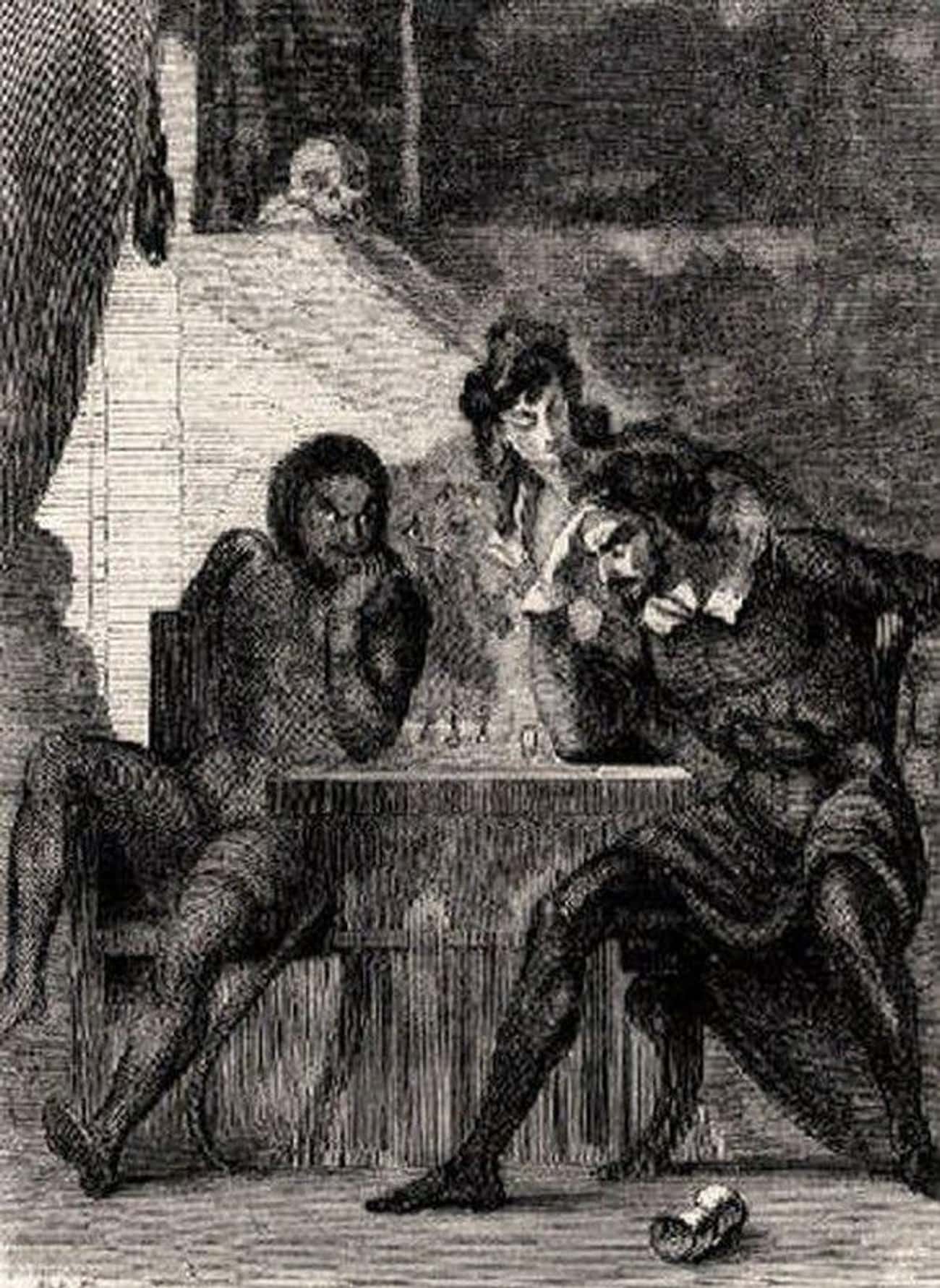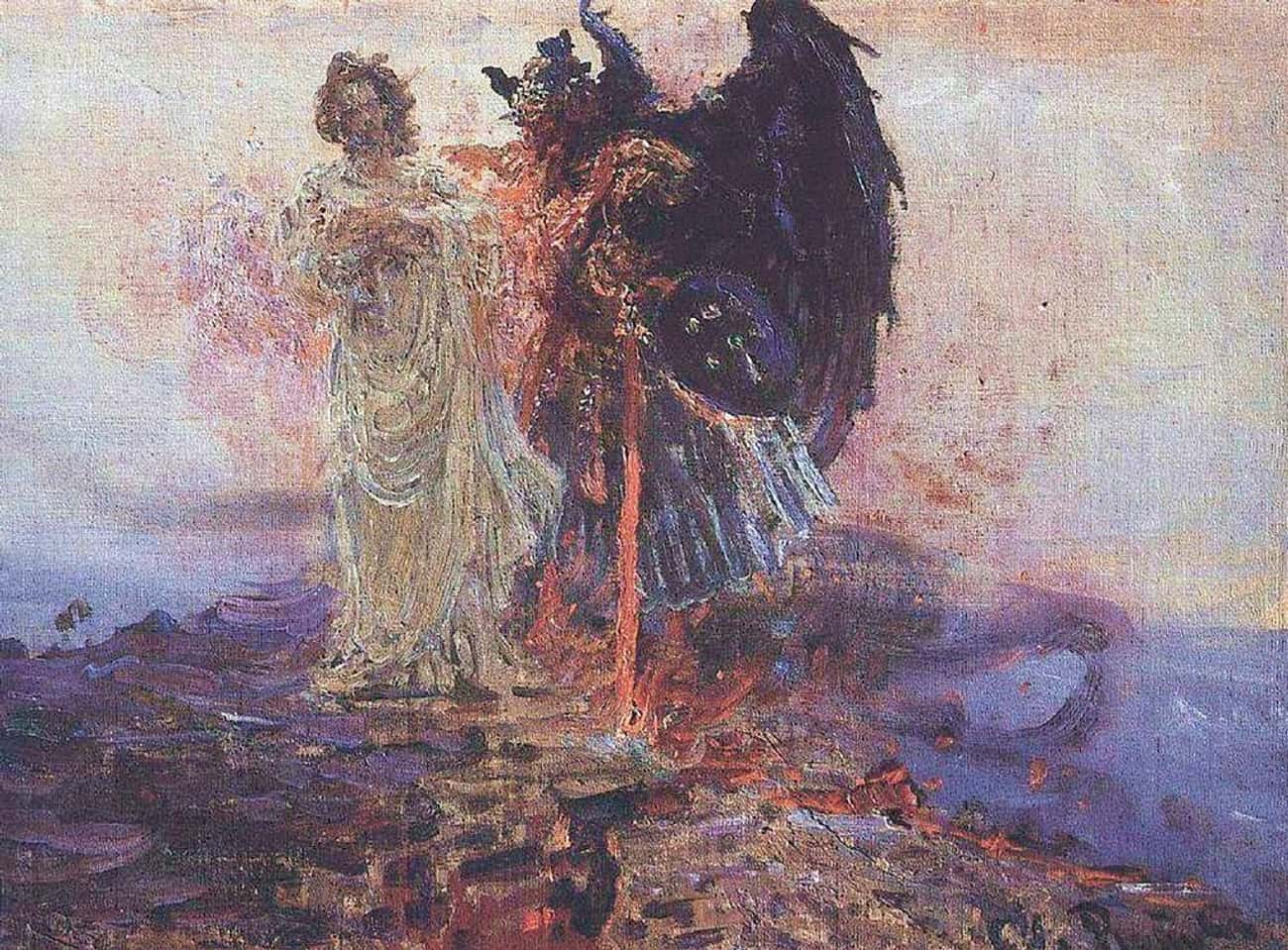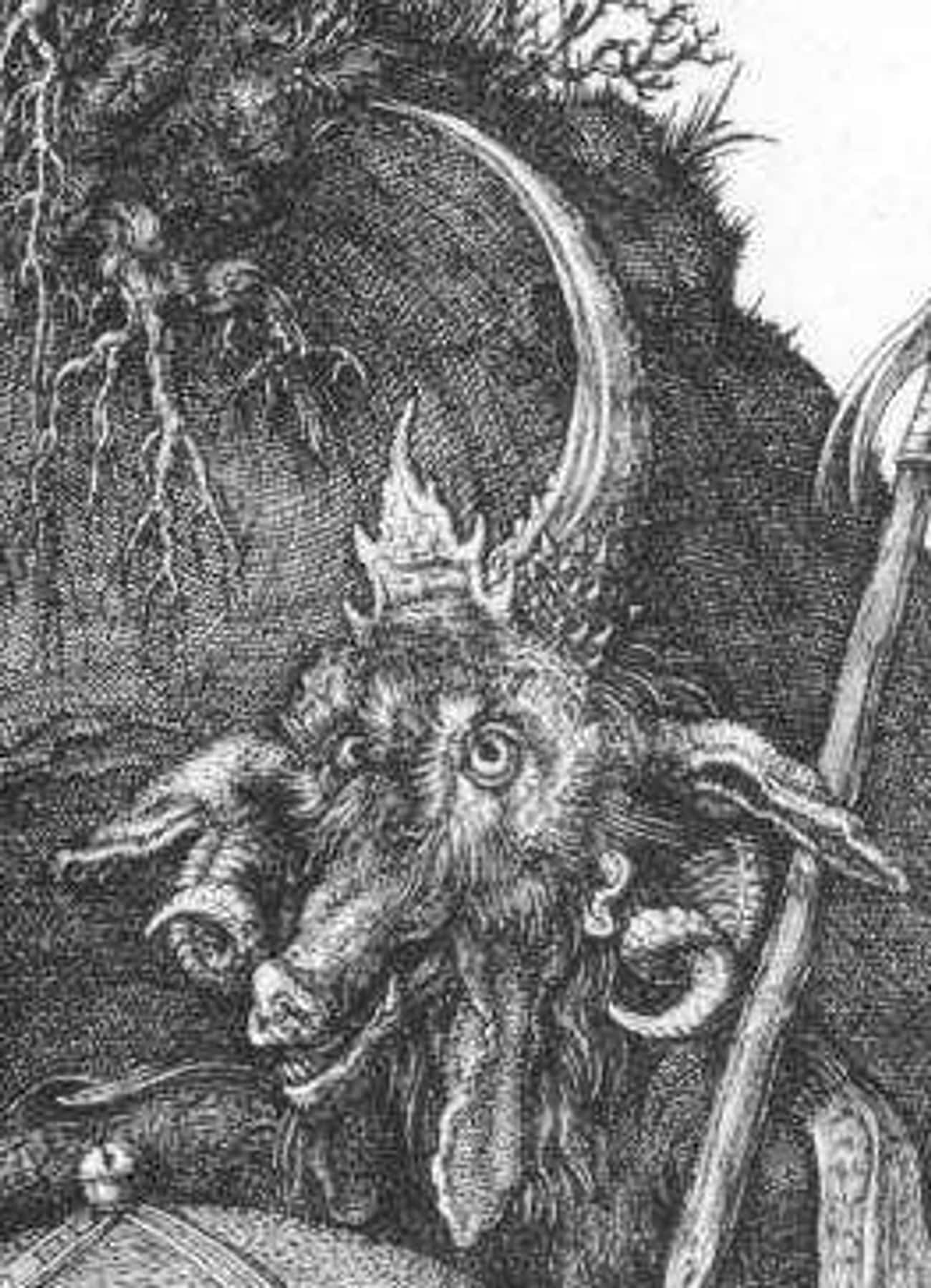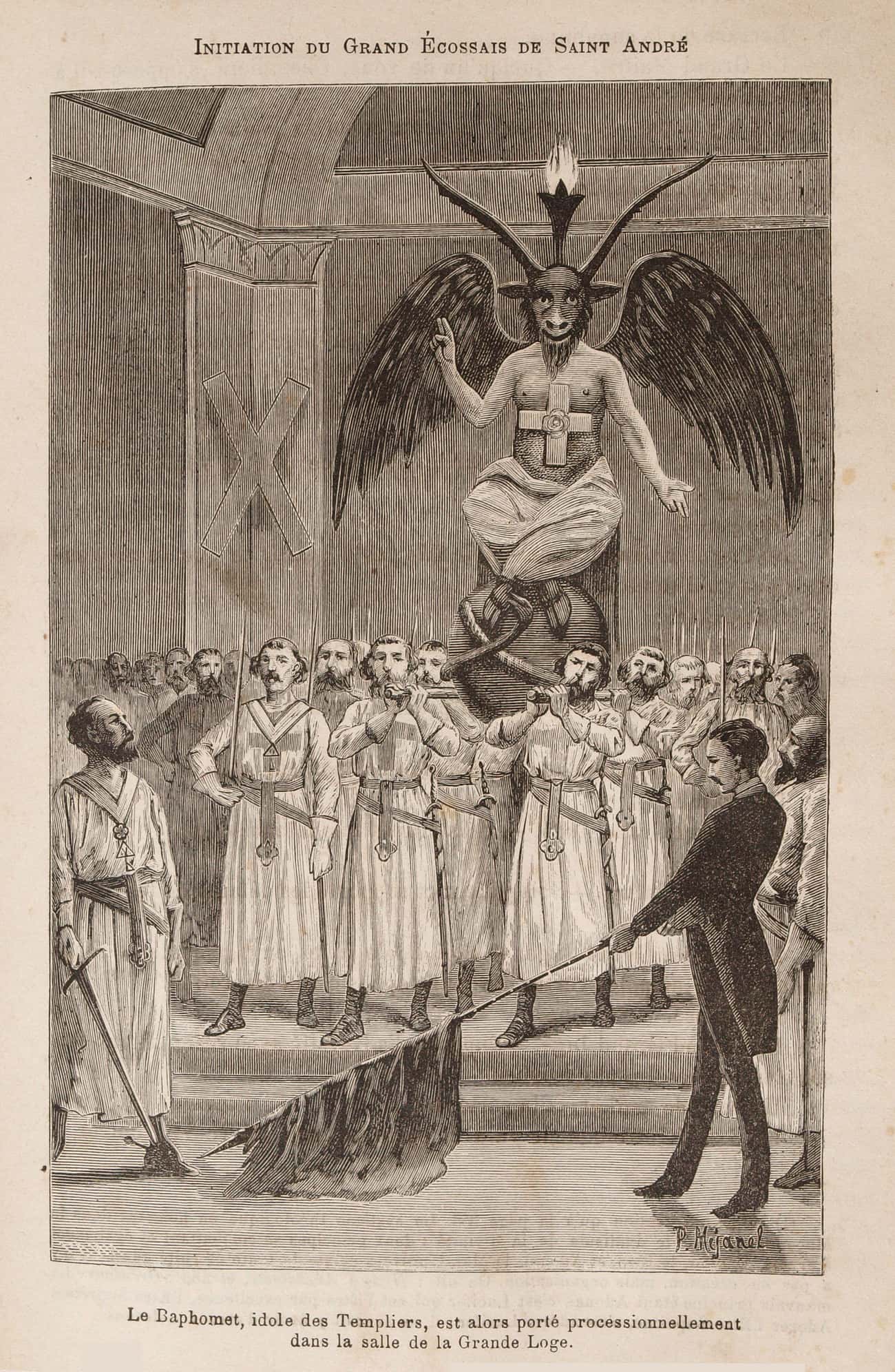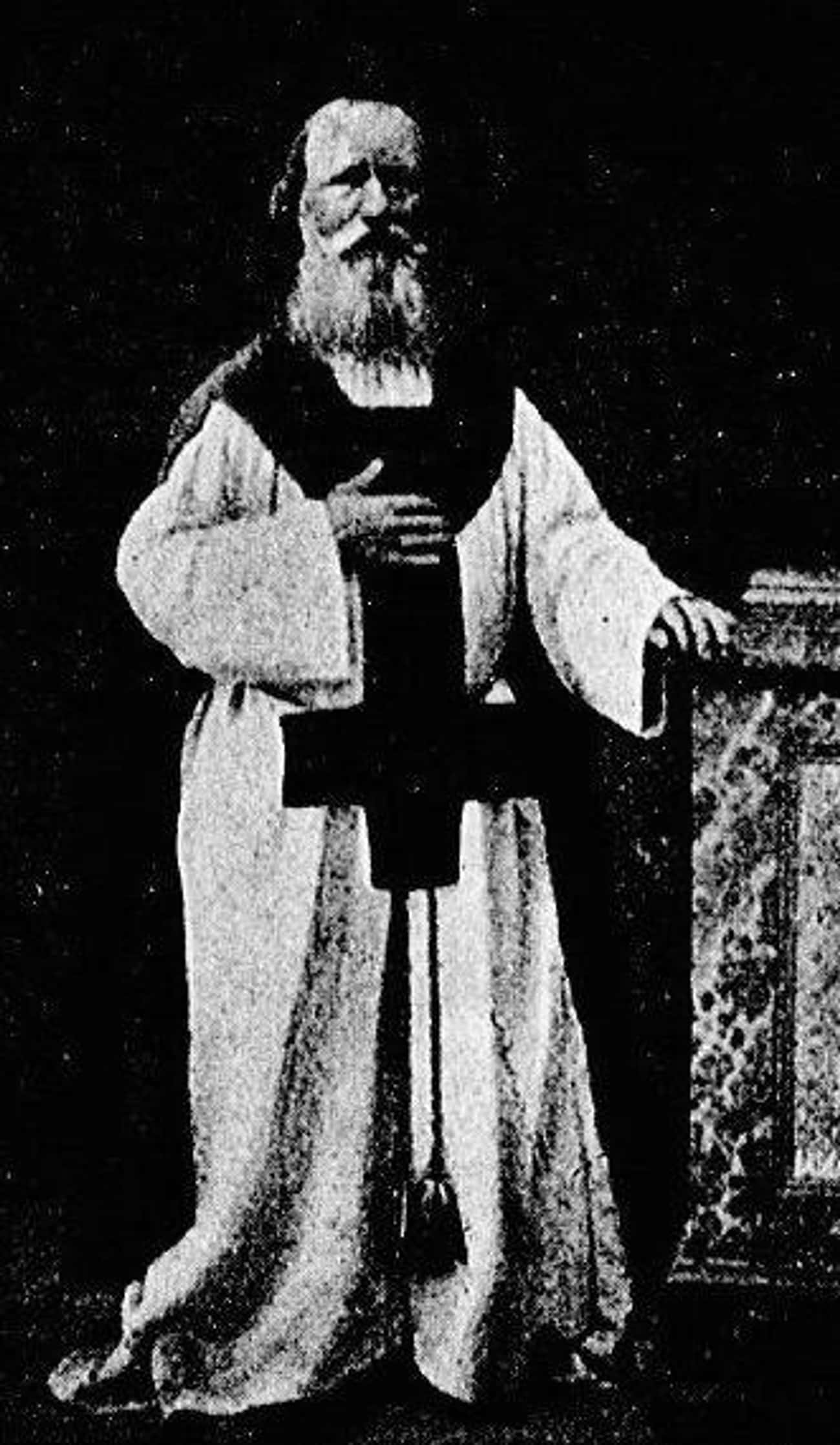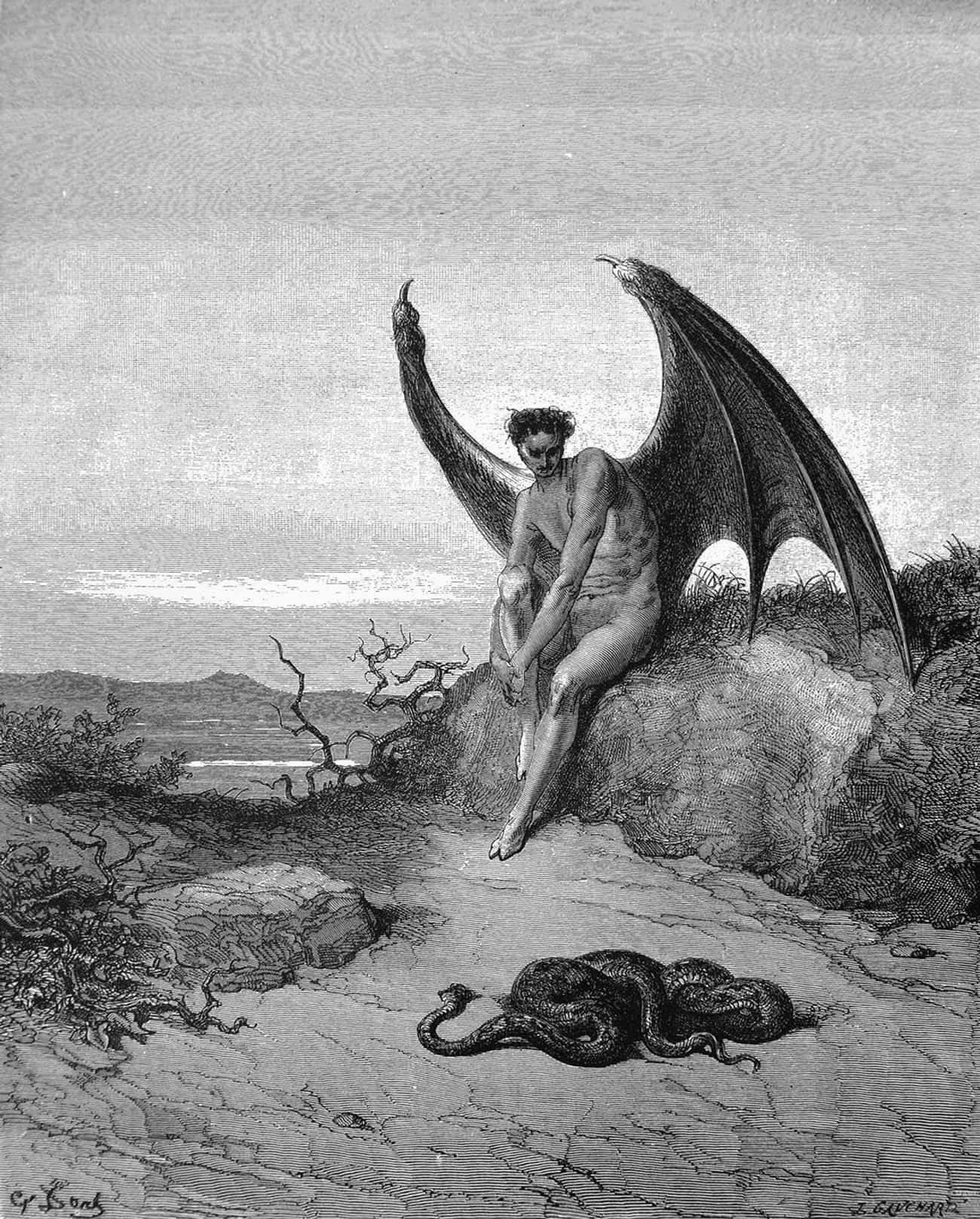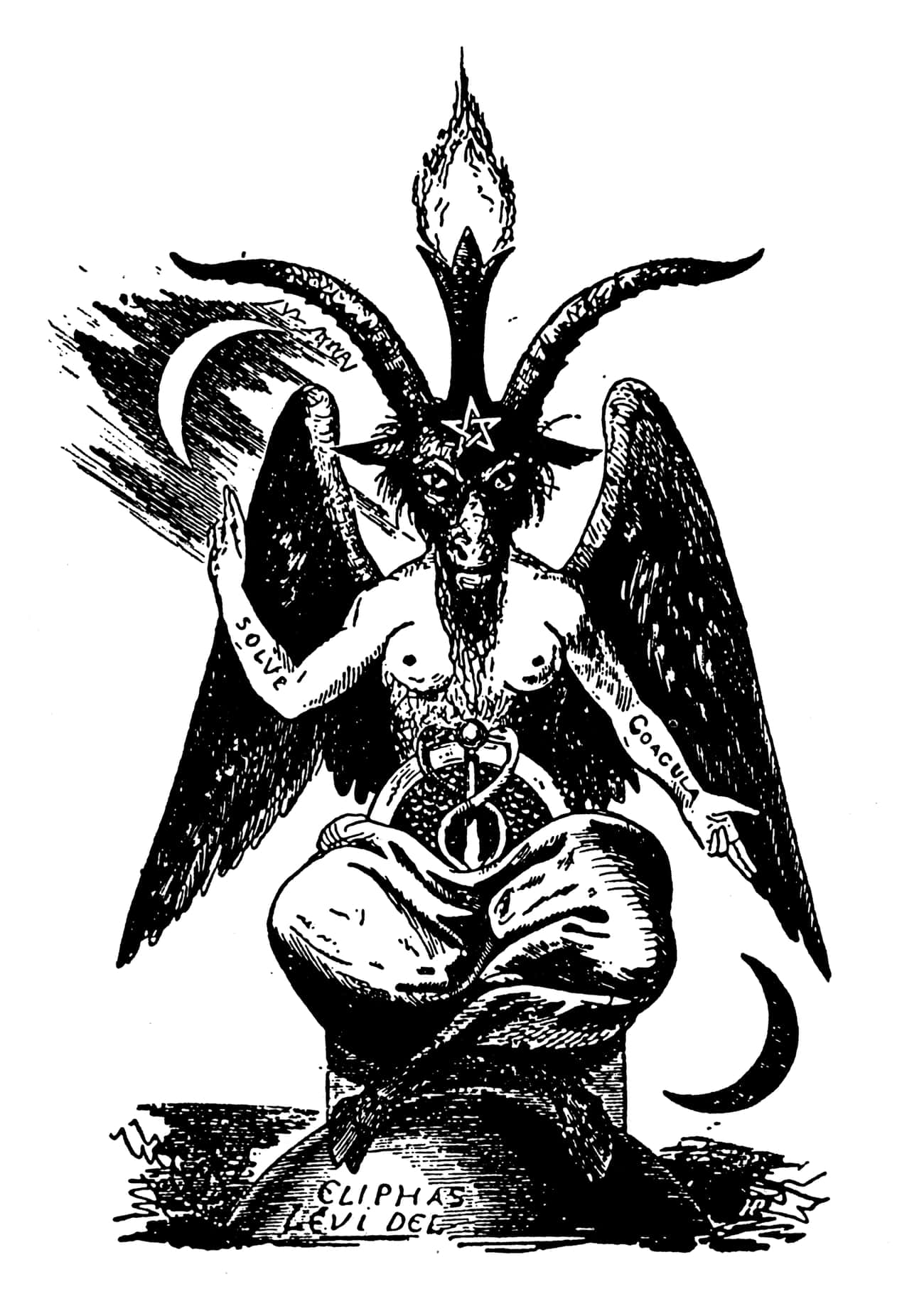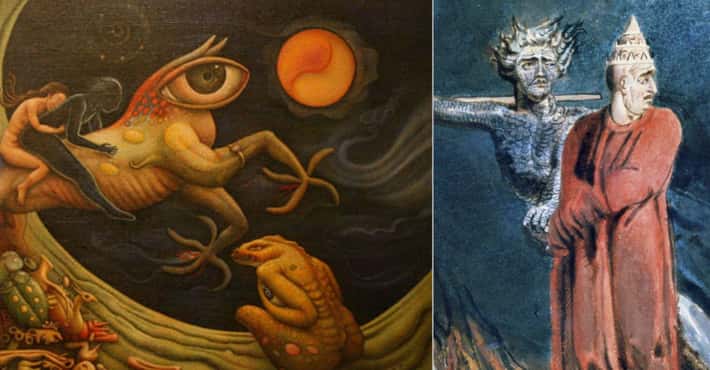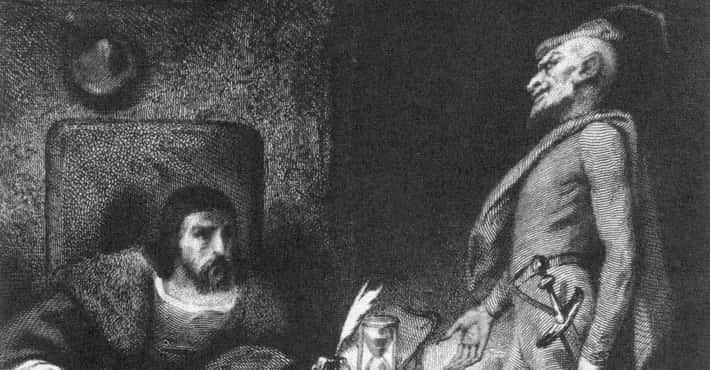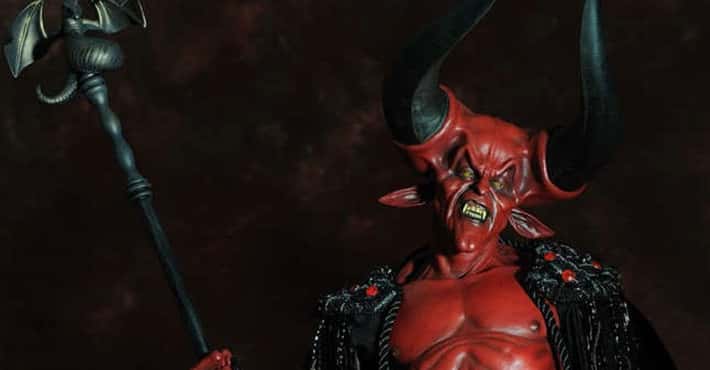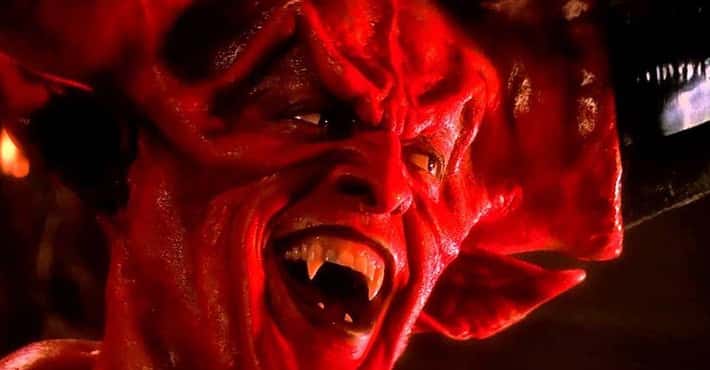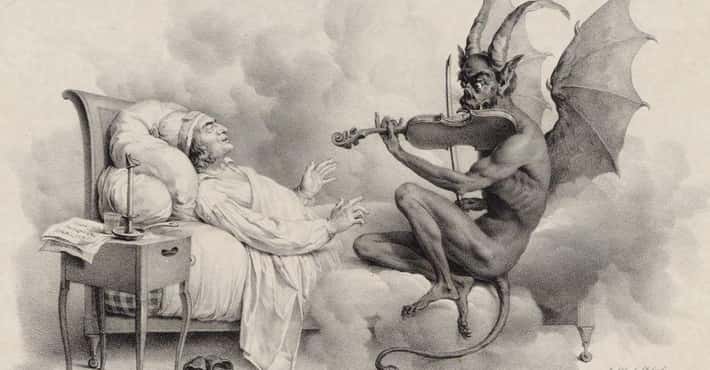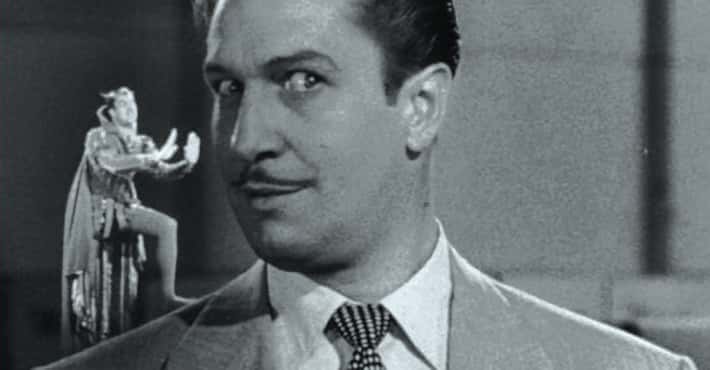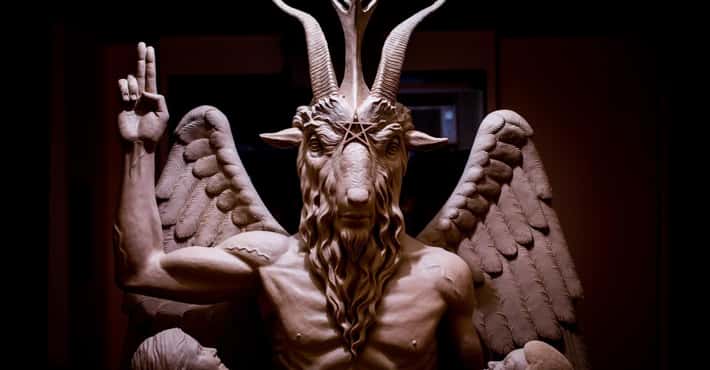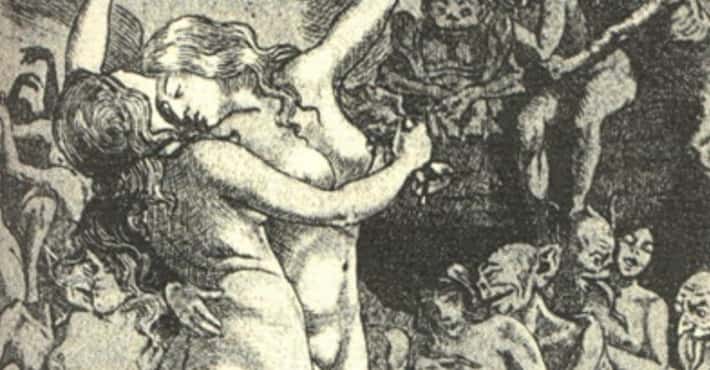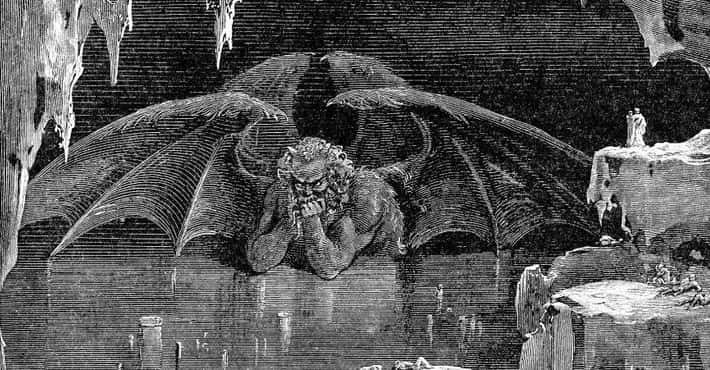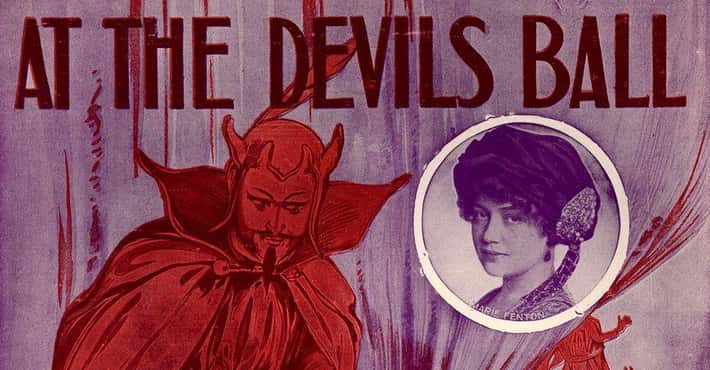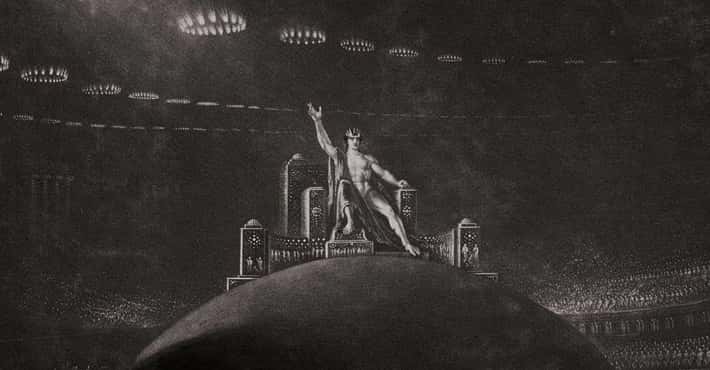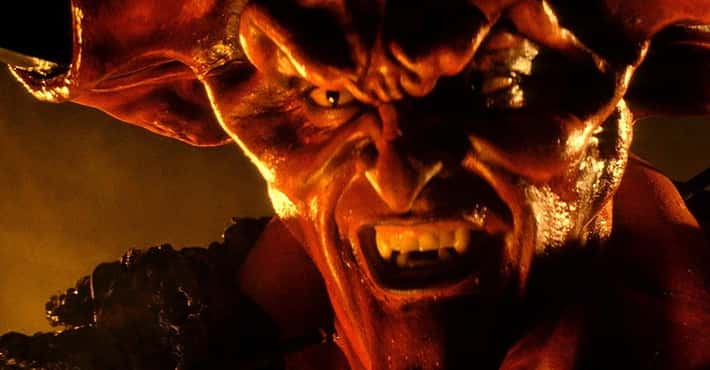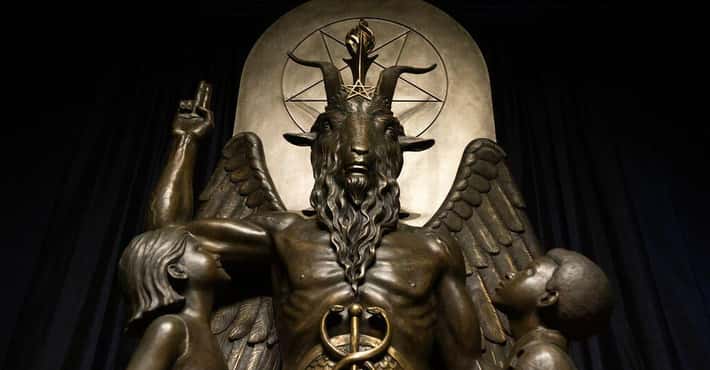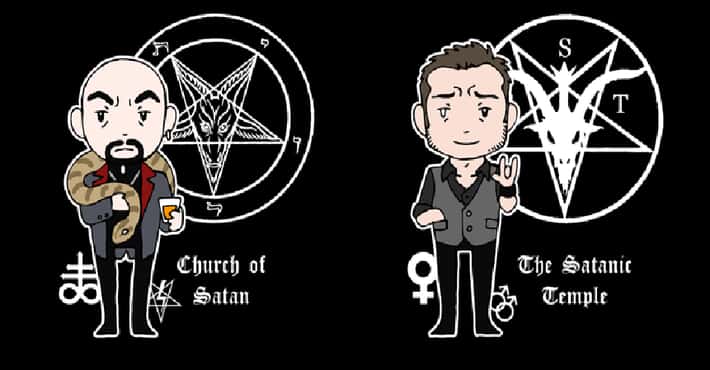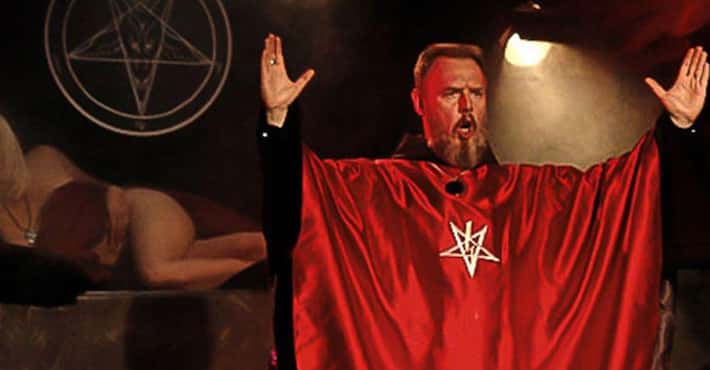Where Exactly Did The Elements Of Satanic Imagery Come From?
Is 666 Actually The Number Of The Beast?
Photo: William Blake / Wikimedia / Public DomainThe number 666 is so synonymous with Satan that there are even people who will go so far as to add more items to their purchase at a coffee shop just to make their total come out to $6.66. What did this number do to become so maligned? The three-digit number originally comes from Saint Irenaeus, Bishop of Lugdunum in Gaul, who decided that the beast from Revelation 13 was in fact the Antichrist, and the numerical values associated with the letters of his name added up to 666.
Although that may not be a reference to the devil, many scholars believe 666 was a way to speak out against Emperor Nero, as his name added up to 666 when written in Aramaic. It's also possible Nero may have already been dead by the time the Book of Revelation was written, but one interpretation is that Irenaeus was using Nero as a way to compare rulers who were using Nero-esqe tactics like taxation, confiscation of property, and economic marginalization.
Who Gave The Devil His Horns?
Photo: internetarchivebookimages / FlickrSatan's most well-known attribute is his horns, but if you've cracked open a Bible recently you'll know the scripture makes zero reference to the Devil having horns. In fact, it doesn't really describe him at all. So, where are the horns from? In the first era of Christianity, the Church was still trying to wipe out paganism, so one of the main sources of propaganda was to take a pagan deity and turn him into something sinister. That's how Egyptian gods like Bes and Isis - a feminine deity who is often shown wearing the headdress of Hathor - became variations of a horned Devil.
Who Decided On Satan's Red Skin Tone?
Photo: Paul Mathey / WIkimedia / Public DomainIf you're picturing the Devil in your head right now, you're probably thinking of a bright-red creature similar to Tim Curry in Legend. Or maybe you're just thinking of Tim Curry in Legend. But how did people decide on red? Initially the Devil was depicted as blue, because, in the 6th centur,y blue was way more evil than red. But as tastes and generalizations about what was and wasn't evil began to change, so did depictions of the Devil who changed from a blue-robed figure to a straight-up red-skinned horned demon.
How About That Pitchfork?
Photo: Artist Unknown / Wikimedia / Public DomainSo, here's the thing about the pitchfork - it's actually a trident. Satan's pitchfork began as a pagan symbol for Poseidon, until the three prongs of the trident were appropriated by Christianity to represent the trinity of the Father, Son, and Holy Spirit. In medieval times, the trident was turned into a symbol for the Devil and changed into a pitchfork. There's no explanation for why the change was made - tridents are way cooler than pitchforks - although it likely had something to do with artists depicting Satan as a pitchfork-carrying demon living in an agrarian society, rather than one living a life by the sea.
Where Did Satan Get His Goat Legs?
Photo: Jacob de Backer / Wikimedia / Public DomainIf you've ever seen the seminal silent film Häxan, you have some idea of what a half-man-half-goat Satan looks like. While the concept of the Devil or Lucifer has existed since at least the 6th century, scholars believe it wasn't until the 19th century that his goat legs appeared. The most plausible theory for the appearance of his goat legs is that neo-paganism was coming into vogue, so poets and artists were suddenly interested in using the Greek goat-god, Pan, as a source of inspiration. So, when it came to painting the Devil, it was natural that the god of chaos and pan flutes would be used as a stand in for Old Scratch.
When Did The Devil Become So Handsome?
Photo: Benoît-Hermogaste Molin / Wikimedia / Public DomainThe 19th century was a turning-point for the depiction of Satan in art. Not only did the Devil find his goat legs, the century that introduced the idea of Satan as a smooth-talking, mysterious figure. Both in Goethe's Faust, and Mark Twain’s Mysterious Stranger, Satan takes on the role of a cunning, sly figure, who tricks people into their own hell rather than scaring them into doing his bidding, as he did in the story of Job. Even though Goethe's Mephistopheles is the central antagonist in the tale, he's given lines that make him sound like a proto-Morrissey, and it is delightful. One of the greatest lines in the book comes from the demonic character who says, “I am not omniscient, but I know a lot.”
Aside from his smooth-talking ways in literature, the 19th century also saw Satan take on a rather clever style in the world of visual art. There was a movement to present Satan's image via bronze busts by artists like Mark Matveevich Antokolsky and Auguste De Wever. Each artist had a different take on the cunning Mephistopheles, but in each version he was presented with a menace unseen in previous iterations.
When Did The Devil Earn His Wings?
Photo: Gustave Doré / Wikimedia / Public DomainWhile Satan's leathery bat wings are less-notable than his bright-red sheen or the trident pitchfork he carries around on a regular basis, there are many depictions of a sad, sulking Satan with wings. Once again, this is an artistic rendering that came from guys who were trying to make their pieces stand out by inferring ideas from scripture. Beginning around the 14th century, angels were shown having massive feathery wings, and demons - who are technically fallen angels - were given bat wings. And, of course, the Devil has the biggest bat wings of them all.
By the 16th century, John Baptist Medina had cemented the idea of a winged Devil with his beautiful engravings that accompanied the fourth edition of Milton's Dante's Inferno - the first to feature illustrations. Medina's depictions of a winged Devil, complete with horns, would dominate depictions of Satan until the 19th century.
Is The Pentagram Good Or Bad?
Photo: ravenmagic / FlickrPentagrams, simple five-pointed stars, have been around forever - but who decided that they were spooky-ooky? Initially, pentagrams were used as part of Christian symbolism to represent the five wounds of Christ (two hands, two feet, and the crown of thorns), but over the course of a few generations the cross became a more prevalent symbol. Then during the Enlightenment, Christian-influenced academics looked in Pythagoras’s use of the pentagram as a representation of the five elements, which he assigned to the points on the star: earth, water, air, and fire on the four lower points; with spirit resting on the topmost point.
Finally, in the 19th century, French Satanist Eliphas Levi, declared that the inverted pentagram was an "intellectual subversion" of Christianity because of its reversal of the natural order, placing matter over the spirit world.
Does The Devil Actually Like To Gamble?
Photo: Theodor von Holst / Wikimedia / Public DomainWhen did the Devil get into gambling for people's souls? The closest he got to doing that in the Bible was when he bet God that he could make Job curse his name - that's really all Biblical scholars have to go off of. He never has a fiddle contest with anyone in order to grant them their wildest dreams or anything - so where did this part of the story come from?
Faust, a German legend based on real life magician, astrologer, and alchemist Johann Georg Faust, as seen in popular works by Goethe and Christopher Marlowe, with puppets by Jan Švankmajer, introduces the concept of the Devil as an entity who's happy to roll the dice for your immortal soul. The legend follows a doctor who grows bored with his life and decides to make a deal with the Devil, who is all too happy to take Faust up on his offer.
Is The Antichrist A Thing?
Photo: WikimediaThe concept of the Antichrist is something that's only entered the cultural-consciousness in the last 50 years or so. For something that's become a lynch-pin of Bible-belt faith, it's ironic that the Antichrist is only mentioned four times in the Bible - and each times it's described as someone who does not "acknowledge Jesus Christ." What it seems like the Bible is saying is that anyone who turns on Christ is automatically anti-christ, much like how people who don't eat yams are... anti-yams.
It wasn't until the 6th century that the Antichrist became a corporeal being, when Saint Irenaeus (the same guy who came to the conclusion that 666 was the number of the beast) decided that the creature was a literal thing, specifically one of the beasts from the Book of Revelation. Then in the Middle Ages the Antichrist was finally portrayed as a human instead of a creature, beginning the trend of depicting the end-of-days in a more figurative way.
Why Are We So Afraid Of Goats?
Photo: WikimediaWhen you think about Satan you probably think about goats, and when you think about goats you probably think about Satan, too. It's not your fault, people have been conditioned to think this way for centuries - but why? Beginning in Greek mythology goats have been connected to chaotic, sexual beings - specifically Pan, an early inspiration for the depiction of Satan. Malcolm Gaskill, a professor of early-modern history at the University of East Anglia, believes that goats have always affected the human psyche, and despite offering evidence in the form of European engravings that "depict the witches’s Sabbath - that is, the remote meetings where witches were supposed to gather to pay homage to Satan - the devil is often depicted as a goat or a goat-like man,” he isn't sure why that is: “I guess the goat-devil features so prominently in European iconography because of the horns and weird eyes. but also because of the association with predatory sexual potency and energy.”
Is The Baphomet Actually Satanic?
Photo: WikimediaThe Baphomet is one of the main visual signifiers of Satanic power in the 21st century, but its origins can be found in a mish-mash of pagan visuals that paint the figure as more of a spooky catchall that has to be imbued with meaning from the viewer rather than as something with any inherent meaning. The Baphomet has been around since the 14th century and was first used by the Knights Templar as an idol, but depictions of what the Baphomet was changed from person to person. Under the duress of torture, various Knights Templar described the Baphomet as a severed head, a cat, or a head with three faces.
It wasn't until Eliphas Levi, the French Satanist who first inverted the pentagram, created a cannonical version of the Baphomet in the 1850s (at least 400 years after the Knights Templar were first tortured) that the goat creature you know and love began to take shape. Levi was inspired by a depiction of the Devil in early Tarot cards, and then he mixed in Occult, Kabbalistic, and Catholic imagery to form a Satanic representation of binary opposites.
Who Came Up With The Inverted Cross?
Photo: WikimediaLike the inverted pentagram, the inverted cross is one of the most well-known signifiers of Satanic lore today. The inversion of Christ's crucifix was first used by Eugène Vintras, a 19th Gnostic revivalist from France. He wasn't just the inventor of one of the most recognizable images ever, he also believed that he was the reincarnation of Elijah, and that he would bring about the end of the world. Shortly after preaching that the world would end, he was condemned by the Vatican, and he declared that the "Reign of the Suffering Christ had been superseded by the Reign of the Holy Spirit of Love."
Why Do We Think The Devil Was A Snake?
Photo: WikimediaMost people will probably tell you that the snake in the garden of Eden was Satan, but Genesis was written prior to the development of the concept of the Devil, so that can't be true. However, early interpreters of the Bible also couldn't believe that the snake in the garden was simply a talking snake, and because the snake was culpable for dragging humans into the world of mortality, it just made too much sense for the snake to actually be Satan. The Devil then began to take on a more serpentine quality in the intertestamental period, when good and bad angels began to fill fiction and the Bible followed suit. Much of the snake-as-an-evil-creature mythology comes from Mesopotamian stories where serpents were known to steal strength, or from Sumerian myths where there were snake gods. Then, similar to when the Devil took on a horned quality because Christian scholars turned Egyptian gods into evil deities, the same thing happened with kindly snake gods.
What's Up With The Two Finger Salute?
Photo: WikimediaThis Satanic element isn't as well-known as the pentagram or goats in general, but its occult status is well-known to anyone who looks up a YouTube video about the illuminati. The salute - two fingers on the right hand pointing up and two on the left hand pointing down - supposedly stands for, "as above, so below." The phrase comes from Hermes Trismegistus, the alleged writer of Hermetic writings from 1 CE, whose writings became popular among alchemists in the Middle Ages. The salute was applied to Eliphas Levi's Baphomet in order to express "the perfect harmony of mercy with justice." Levi really should get some of the credit for creating modern Satanism while Aleister Crowley ended up hogging the spotlight.


